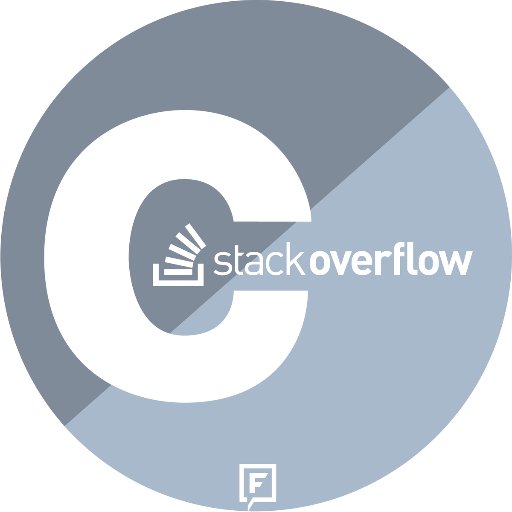#bytebuffer zoekresultaten
#Java NIO (Non-blocking I/O) with Server-Client Example - #ByteBuffer and channels.Selector - #Java NIO Vs. IO crunchify.me/1UmRmEN

It's a pitty there is no effort to kill it and to stop using this monstrosity #ByteBuffer #Java
#Java NIO (Non-blocking I/O) with Server-Client code - #ByteBuffer and channels.Selector - #Java NIO Vs. IO crunchify.me/1UmRmEN

You might have good or bad opinion about #Java's #ByteBuffer but reality is stubborn: experienced programmers will have very bad times "understanding" how position, limit, capacity, remaining, clear, flip and compact are all related in a coherent, clean and simple way.
Byte Buffers and Non-Heap Memory (#java #memory #bytebuffer #buffer #jvm) http://icio.us/dpt2oh
@JonathanGiles Can we output node as image from PixelWriter ? I did it using #WritableImage and #ByteBuffer but didn't work at all.
In simple terms, given any #ByteBuffer reference/variable, you have no way (I repeat, no way) to know if that ByteBuffer has or not content. It might or not. Depends on the context.
#rustlang friends: if I wanted to write a super fast custom serialization/compression library, what byte level crates should I rely on? Byteorder? Bytes? Pod? Any other suggestion? Looking for basically faster equiv of #java #bytebuffer.
#Java's #ByteBuffer (docs.oracle.com/javase/7/docs/…) is a very good example of a very bad designed interface. It has a very confusing, convoluted and too specific API that crosses reasonable limits that should hampers its inclusion in anything that targets general public.
Has anoyone noticed that #ShortBuffer -> #ByteBuffer ordering has changed on #Android #Nougat...
One thread one ByteBuffer NIO javahow.net/q/30836723 #RT #bytebuffer #Twitter #autofollow #MustRetweet #Retweet #nio
Outstanding article about #ByteBuffer: kdgregory.com/index.php?page… #java #BigMemory
We compared #bytebuffer vs #bytearray - see results: techwars.io/fight/bytebuff…
#Bytebuffer marshut.net/kiqsur/iterato… Iterators and comprehensions
#Bytebuffer #Pointers marshut.com/ipyunp/file-ha… File handling problem
Converting a n-bytes array to integer with ByteBuffer stackoverflow.com/questions/6286… #java #byte #bytebuffer
It's a pitty there is no effort to kill it and to stop using this monstrosity #ByteBuffer #Java
Java ByteBuffer in C? [Votes: 1] #java #c #bytebuffer stackoverflow.com/questions/5649…
#rustlang friends: if I wanted to write a super fast custom serialization/compression library, what byte level crates should I rely on? Byteorder? Bytes? Pod? Any other suggestion? Looking for basically faster equiv of #java #bytebuffer.
Memory leak using mimalloc? [Votes: 1] #c #dynamicarrays #bytebuffer stackoverflow.com/questions/5962…
In simple terms, given any #ByteBuffer reference/variable, you have no way (I repeat, no way) to know if that ByteBuffer has or not content. It might or not. Depends on the context.
You might have good or bad opinion about #Java's #ByteBuffer but reality is stubborn: experienced programmers will have very bad times "understanding" how position, limit, capacity, remaining, clear, flip and compact are all related in a coherent, clean and simple way.
#Java's #ByteBuffer (docs.oracle.com/javase/7/docs/…) is a very good example of a very bad designed interface. It has a very confusing, convoluted and too specific API that crosses reasonable limits that should hampers its inclusion in anything that targets general public.
#Java NIO (Non-blocking I/O) with Server-Client code - #ByteBuffer and channels.Selector - #Java NIO Vs. IO crunchify.me/1UmRmEN

#Java NIO (Non-blocking I/O) with Server-Client Example - #ByteBuffer and channels.Selector - #Java NIO Vs. IO crunchify.me/1UmRmEN

#Java NIO (Non-blocking I/O) with Server-Client code - #ByteBuffer and channels.Selector - #Java NIO Vs. IO crunchify.me/1UmRmEN

Something went wrong.
Something went wrong.
United States Trends
- 1. Good Wednesday 19.9K posts
- 2. #MAYATVAWARDS2025 458K posts
- 3. #NationalCatDay N/A
- 4. Huda 12.5K posts
- 5. #hazbinhotelseason2 13.1K posts
- 6. Clippers 14.7K posts
- 7. Harden 10.8K posts
- 8. South Korea 89.6K posts
- 9. Giannis 32.8K posts
- 10. Namjoon 192K posts
- 11. #MLBS6Spoilers 11.3K posts
- 12. Tapper 27.5K posts
- 13. Olandria 27.8K posts
- 14. Jay Z 6,574 posts
- 15. Kawhi 3,806 posts
- 16. Eminem 12.1K posts
- 17. #RHOSLC 8,336 posts
- 18. Nvidia 72.6K posts
- 19. Western Union 12.6K posts
- 20. Caden 9,092 posts















































